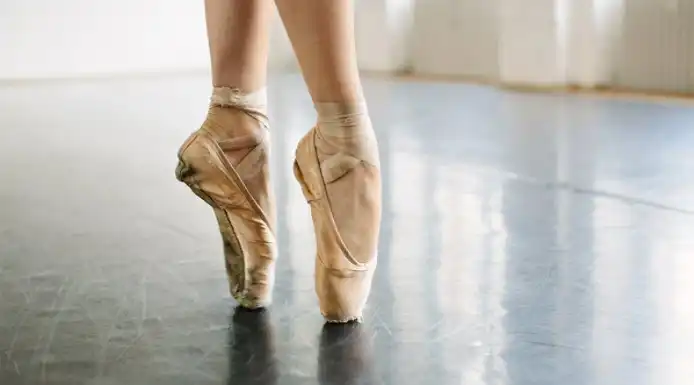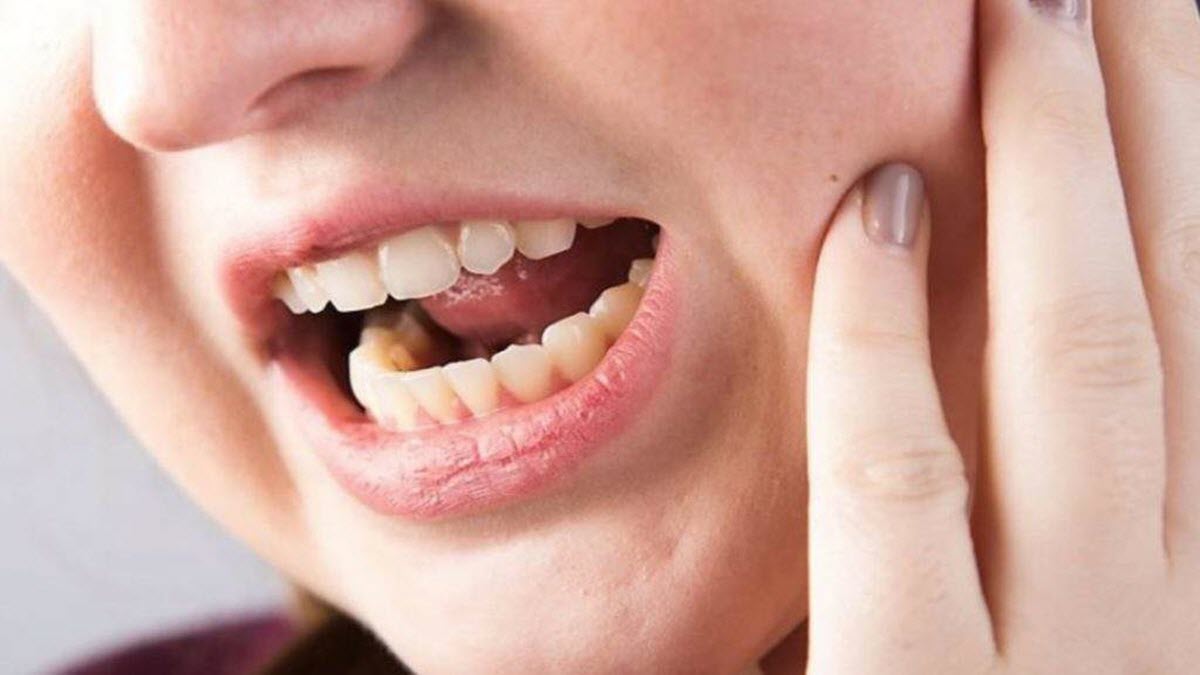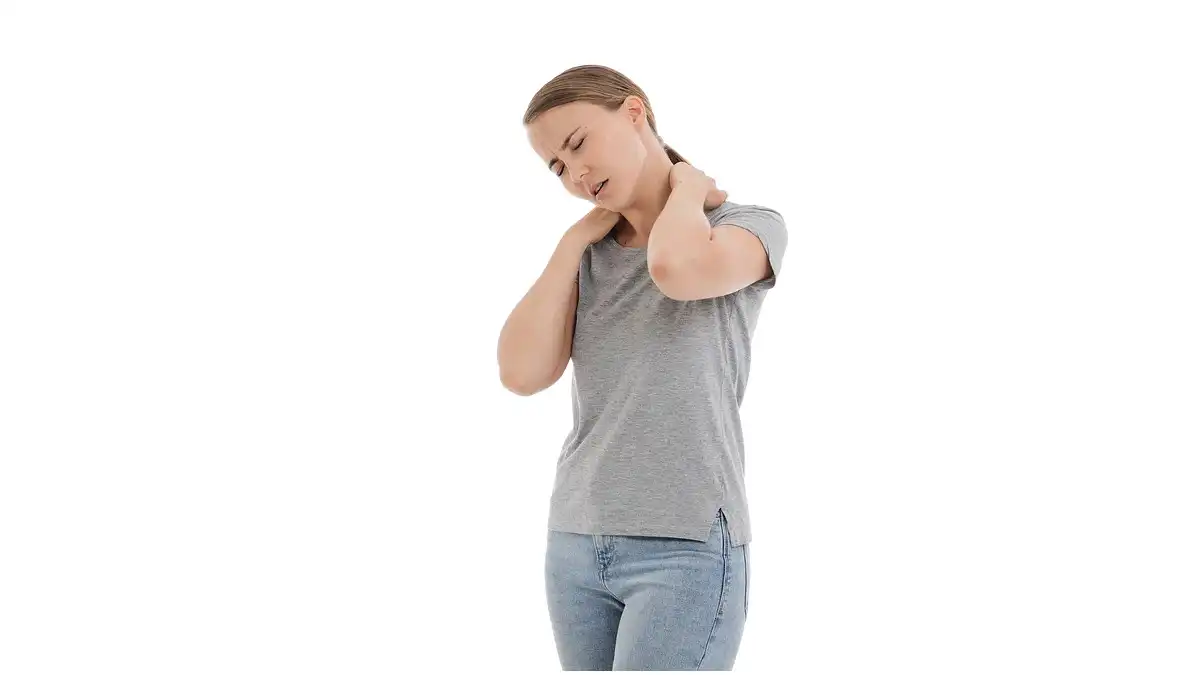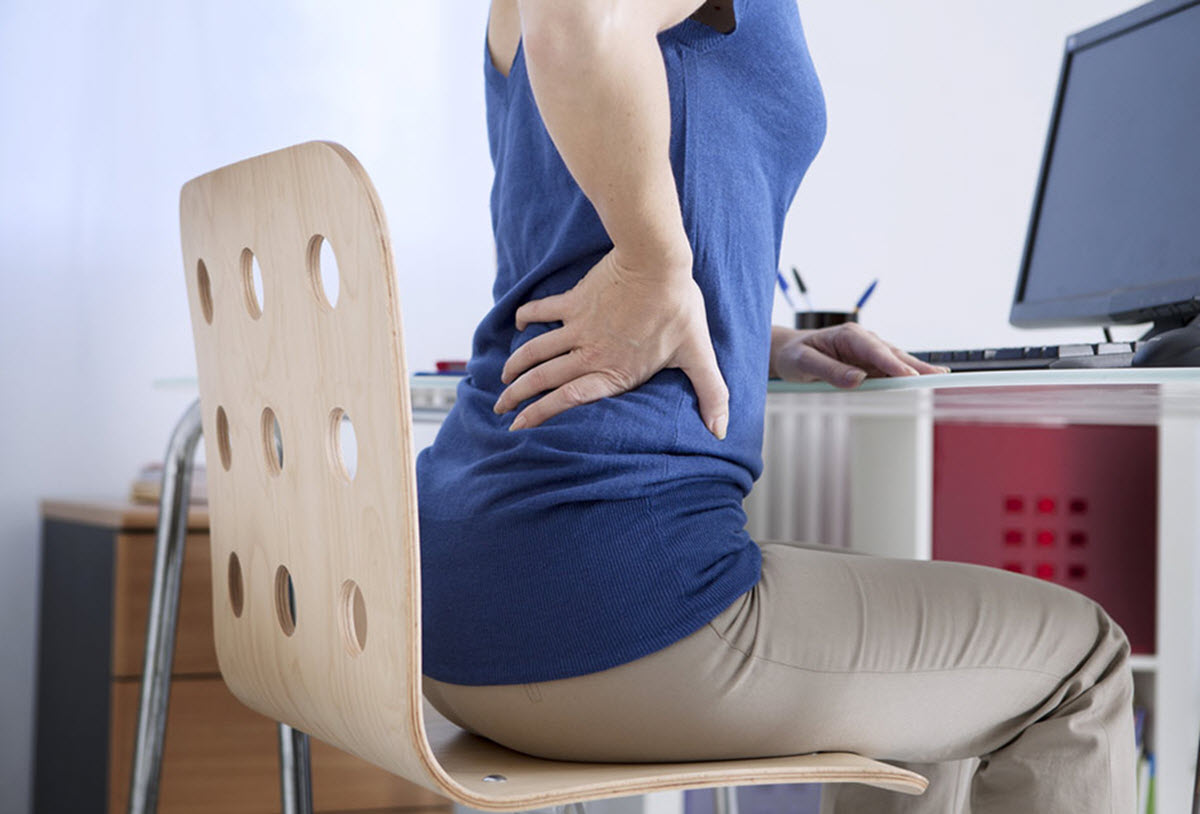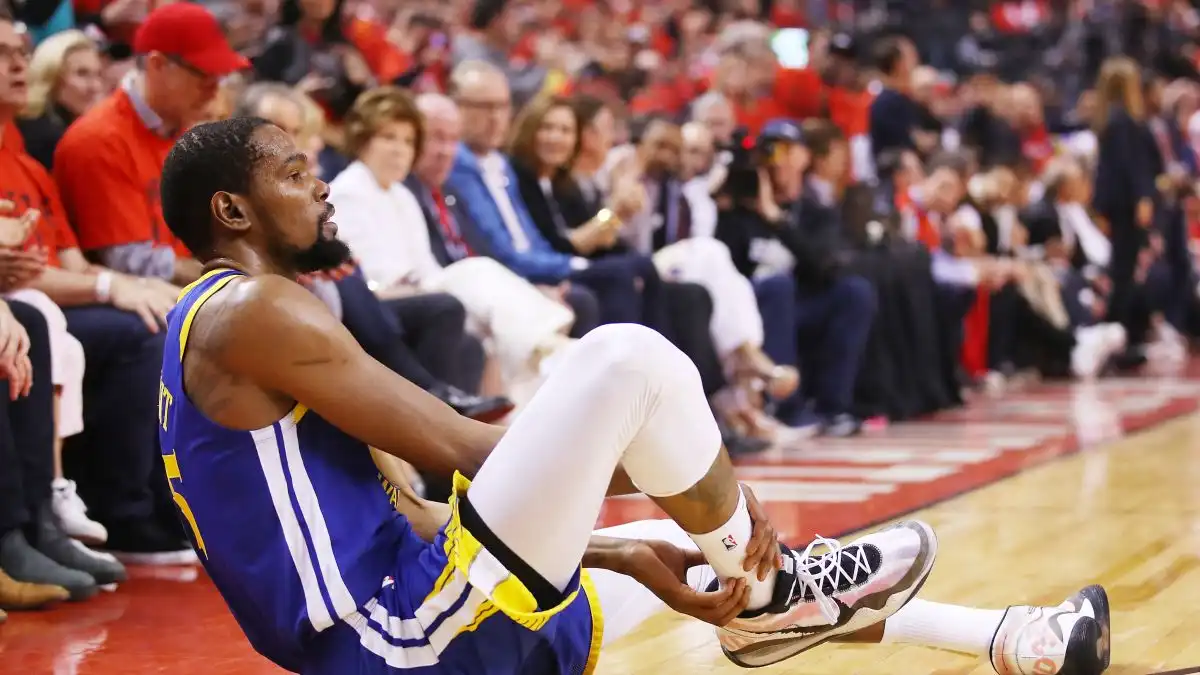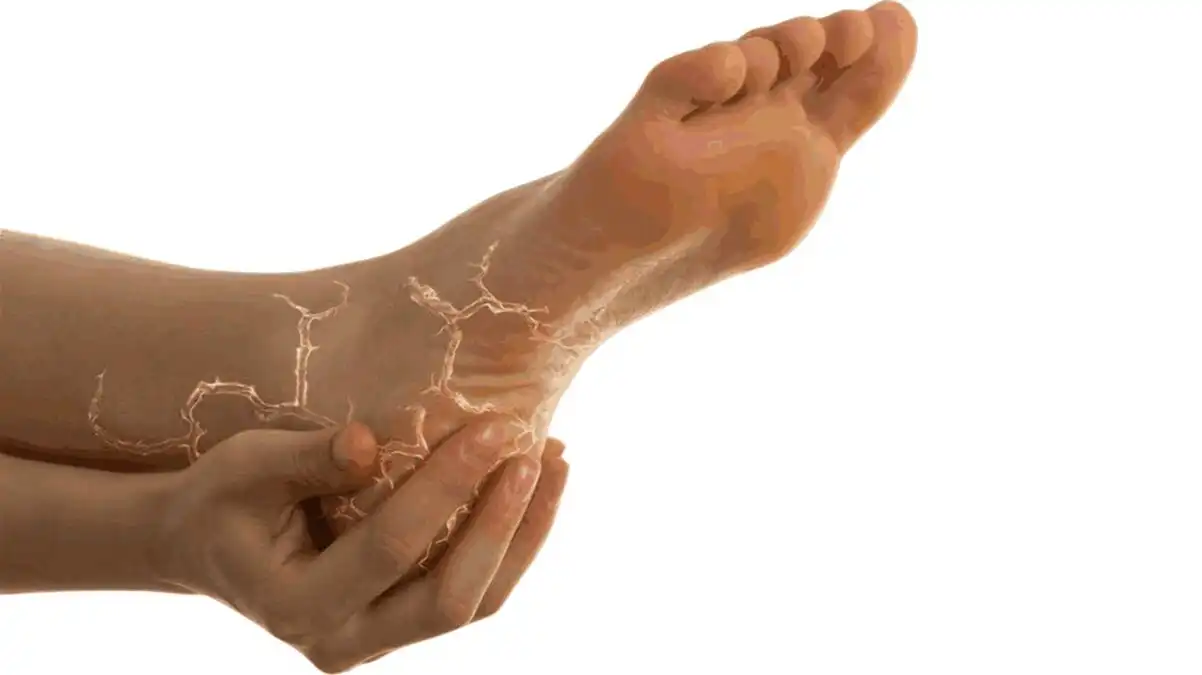Introduction: The Importance of Foot Arches
The arches of the foot are essential anatomical structures that provide crucial support and functionality during movement. Comprising three primary types—the medial longitudinal arch, lateral longitudinal arch, and transverse arch—they collectively ensure stability, balance, and effective shock absorption with every step.
Understanding the structure and function of these arches is paramount for maintaining optimal foot health and overall mobility. Proper alignment and strength in the arches not only prevent common foot ailments like plantar fasciitis and flat feet but also enhance athletic performance and daily comfort. As foundational elements of the body’s weight-bearing mechanism, the foot arches distribute forces efficiently, reducing strain on muscles and joints throughout the lower extremities.
In this exploration, we delve into the intricate design and biomechanics of each arch, highlighting their role in supporting the body’s weight, adapting to various surfaces, and facilitating smooth, efficient movement. By grasping the significance of foot arches, we empower ourselves to nurture and preserve this vital aspect of our musculoskeletal health.
Anatomy of the Foot Arches
Anatomy of the Foot Arches
The human foot consists of three main arches that work together to provide support, stability, and flexibility. These arches are crucial for proper weight distribution and shock absorption during various activities such as walking, running, and jumping. Understanding the anatomy and function of these arches is fundamental to maintaining foot health and addressing common foot-related issues.
The Three Plantar Arches
- Medial Longitudinal Arch
- Description: This is the highest and most significant of the three arches, running along the inside of the foot from the heel to the forefoot.
- Components: Formed by the calcaneus, talus, navicular, first cuneiform, and first metatarsal bones.
- Function: Plays a primary role in shock absorption and weight distribution, providing flexibility and support during movement.
- Lateral Longitudinal Arch
- Description: This arch runs parallel to the medial arch but is located on the outer side of the foot. It is lower and less prominent.
- Components: Formed by the calcaneus, cuboid, and fourth and fifth metatarsal bones.
- Function: Essential for providing lateral stability and balance, supporting the foot during side-to-side movements.
- Transverse Arch
- Description: The transverse arch runs across the midfoot and is divided into two main segments: the anterior and posterior transverse arches.
- Components:
- Anterior Transverse Arch: Formed by the heads of the metatarsals.
- Posterior Transverse Arch: Formed by the tarsal and metatarsal bones.
- Function: Helps maintain the shape of the foot, providing stability and flexibility, and supporting weight distribution across the foot.

The Medial Longitudinal Arch
The medial longitudinal arch of the foot is a crucial anatomical structure that supports the body’s weight and facilitates efficient locomotion. As one of the three primary arches of the foot, alongside the lateral longitudinal arch and the transverse arch, it plays a pivotal role in maintaining balance, stability, and shock absorption during various activities.
Spanning from the heel to the ball of the foot, the medial longitudinal arch forms a graceful curve that helps distribute the body’s weight evenly across the foot. This distribution is essential for reducing the impact forces generated during activities such as walking, running, and jumping. By absorbing and dispersing these forces, the arch protects the bones, joints, and soft tissues of the foot from excessive stress and potential injury.
The structure of the medial longitudinal arch is primarily maintained by the arrangement of bones, ligaments, and muscles. It is formed by several key bones: the calcaneus (heel bone), talus, navicular, first cuneiform, and first metatarsal. These bones are connected and supported by various ligaments, including the plantar fascia, calcaneonavicular ligament (spring ligament), and the long and short plantar ligaments. Together, these ligaments provide stability and elasticity to the arch, allowing it to adapt to different surfaces and movements.
Muscular support is also integral to the function of the medial longitudinal arch. Muscles such as the tibialis posterior, flexor hallucis longus, and intrinsic foot muscles play vital roles in maintaining the arch’s shape and controlling its movements. These muscles work synergistically to provide dynamic support during weight-bearing activities, ensuring that the arch remains stable and responsive.
Functionally, the medial longitudinal arch acts as a natural shock absorber. When the foot strikes the ground, especially during activities involving impact or weight-bearing, the arch compresses slightly. This compression helps to dissipate the forces generated by the impact, reducing the strain on the joints and soft tissues of the foot. Additionally, the arch assists in propelling the body forward during the push-off phase of walking or running, contributing to overall efficiency of movement.
In summary, the medial longitudinal arch is not only integral to the structural integrity of the foot but also essential for biomechanical efficiency and injury prevention. Its ability to absorb shock and distribute weight effectively underscores its importance in maintaining foot health and facilitating smooth, fluid movement in daily activities and sports.
Structure and Components
The medial longitudinal arch of the foot is a complex structure essential for weight-bearing, stability, and shock absorption. Composed of five key bones—the calcaneus, talus, navicular, first cuneiform, and first metatarsal (MT)—this arch forms a resilient framework that adapts to various pressures and movements encountered during daily activities.
At its foundation lies the calcaneus, commonly known as the heel bone. Positioned at the posterior aspect of the foot, the calcaneus provides a stable anchor for the arch and serves as the primary point of contact with the ground during weight-bearing activities. Adjacent to the calcaneus is the talus, a bone that articulates with the leg bones (tibia and fibula) to facilitate ankle movement and maintain stability.
The navicular bone rests in front of the talus, contributing crucially to the medial longitudinal arch’s shape and function. This boat-shaped bone plays a pivotal role in maintaining the arch’s height and flexibility, ensuring proper weight distribution across the foot. Further along the arch, the first cuneiform bone serves as a bridge between the navicular and the base of the first metatarsal bone.
The first metatarsal (MT), located at the forefront of the arch, completes the structural integrity of the medial longitudinal arch. It connects directly to the proximal phalanges of the big toe (hallux), forming a stable platform for push-off during walking and running.
In addition to its bone structure, the medial longitudinal arch is reinforced by a network of ligaments and tendons that provide stability and elasticity. Key ligaments include the plantar fascia, calcaneonavicular ligament (spring ligament), and the long and short plantar ligaments. The plantar fascia, in particular, extends from the calcaneus to the toes, acting like a bowstring to support the arch and absorb shock during weight-bearing activities.
Muscular support is also critical for maintaining the arch’s integrity and function. Muscles such as the tibialis posterior, flexor hallucis longus, and intrinsic foot muscles work in harmony to control arch height, stabilize the foot, and facilitate movement. These muscles play a crucial role in dynamic stabilization during activities like walking, running, and jumping, ensuring that the arch remains resilient and responsive to changes in terrain and movement demands.
In summary, the medial longitudinal arch of the foot is a sophisticated biomechanical structure formed by five essential bones and supported by a network of ligaments and muscles. Its ability to adapt to various pressures and movements underscores its importance in maintaining foot health, stability, and efficient locomotion in daily life and athletic endeavors.
Key Role of the Navicular Bone
The navicular bone plays a pivotal role in the stability and function of the medial longitudinal arch of the foot. Positioned centrally along the arch, the navicular bone acts as a keystone, contributing significantly to its structural integrity and dynamic adaptability.

Anatomy and Positioning
Situated between the talus and the cuneiform bones, the navicular bone resembles a boat in shape, with its concave proximal surface articulating with the head of the talus. This unique morphology allows for smooth gliding movements and load transmission essential for weight-bearing activities. Its strategic position within the foot’s midfoot region places it at a critical juncture where it supports and distributes forces across the arch.
Supporting the Medial Longitudinal Arch
The navicular bone’s primary function is to maintain the height and flexibility of the medial longitudinal arch. During weight-bearing activities, such as walking or running, the navicular bone undergoes subtle movements that allow for shock absorption and adaptation to uneven surfaces. These movements are facilitated by the ligamentous and muscular structures surrounding the bone, ensuring that the arch remains stable and responsive.
Ligamentous Support
Several ligaments attach to the navicular bone, providing crucial stability and support to the medial longitudinal arch. One of the most significant is the spring ligament, also known as the plantar calcaneonavicular ligament. This ligament spans from the anterior aspect of the calcaneus to the navicular bone, forming a robust connection that helps maintain the arch’s shape and function. Additionally, the deltoid ligament on the medial side of the foot provides further reinforcement, contributing to overall stability.
Muscular Influence
Muscles also play a vital role in supporting the navicular bone and the medial longitudinal arch. The tibialis posterior muscle, in particular, attaches to the navicular bone via its tendon. This muscle acts as a dynamic stabilizer, controlling the arch’s height and preventing excessive flattening during weight-bearing activities. The intrinsic foot muscles, located within the sole of the foot, also contribute by fine-tuning the position of the navicular and maintaining optimal arch support.
Functional Implications
Proper mobility and function of the navicular bone are essential for maintaining overall foot health and preventing conditions such as flat feet or pes planus. Dysfunction or misalignment of the navicular bone can lead to structural imbalances within the foot, causing pain, discomfort, and reduced mobility. Inadequate support of the medial longitudinal arch due to navicular dysfunction can result in overpronation or excessive flattening of the foot during movement, potentially contributing to chronic foot problems over time.
Ligamentous and Muscular Support
Several ligaments and muscles play crucial roles in supporting the medial longitudinal arch of the foot, ensuring its stability and functionality during weight-bearing activities.
Ligamentous Support
- Calcaneonavicular Plantar Ligament (Spring Ligament): The calcaneonavicular ligament, commonly referred to as the spring ligament, is a robust band of connective tissue that spans from the anterior aspect of the calcaneus (heel bone) to the navicular bone. This ligament provides essential support to the arch, helping to maintain its shape and preventing excessive flattening during weight-bearing. It acts like a spring, absorbing shock and distributing forces effectively across the foot.
- Long and Short Plantar Ligaments: These ligaments run along the underside (plantar surface) of the foot, connecting various bones and providing stability to the arch. The long plantar ligament extends from the calcaneus to the cuboid and metatarsals, while the short plantar ligaments connect adjacent bones within the arch. Together, they contribute to the overall strength and resilience of the medial longitudinal arch.
- Deltoid Ligament: Located on the medial (inner) side of the foot, the deltoid ligament is a complex structure consisting of multiple bands that attach to the navicular bone and other bones of the foot. It primarily functions to stabilize the ankle joint but also provides indirect support to the medial longitudinal arch, especially during movements that involve pronation and supination of the foot.
- Plantar Fascia: Perhaps the most significant ligamentous structure supporting the medial arch is the plantar fascia. This dense band of fibrous tissue extends from the calcaneus to the base of the toes, forming the foundation of the foot’s arches. The plantar fascia acts like a bowstring, tensioning during weight-bearing activities to maintain the arch’s height and elasticity. Its central band is particularly robust, originating from the medial calcaneal tuberosity and extending distally to the toes, providing primary support for the arch.
Muscular Support
In addition to ligaments, several muscles contribute to the dynamic support and stability of the medial longitudinal arch:
- Tibialis Posterior: This muscle originates from the back of the tibia and fibula and inserts into the navicular bone and several other bones of the foot. It plays a crucial role in controlling the descent of the arch during weight-bearing and assists in maintaining its shape.
- Flexor Hallucis Longus: Located deep within the calf, this muscle runs along the back of the leg and inserts into the base of the big toe. It helps in flexing the big toe and contributes to the overall stability of the arch during push-off.
- Intrinsic Foot Muscles: These small muscles are located within the sole of the foot and play a vital role in controlling fine movements of the toes and maintaining arch integrity. They provide essential support during static and dynamic activities, ensuring proper alignment and function of the foot’s arches.
Dynamic Support During Movement
During movement, the dynamic support provided by the anterior and posterior tibial muscles is crucial for maintaining the structural integrity and functionality of the medial longitudinal arch of the foot. These muscles work synergistically to control the movements of the foot and stabilize the arch during various activities such as walking, running, and jumping.
Anterior Tibial Muscle
The anterior tibial muscle originates from the front surface of the tibia and interosseous membrane (between the tibia and fibula). It extends down the leg and passes behind the medial malleolus (inner ankle bone), where it becomes the anterior tibial tendon. This tendon continues into the foot and attaches to the medial cuneiform and base of the first metatarsal bone. Its primary functions include dorsiflexion of the foot (lifting the foot and toes upward) and inversion (turning the sole of the foot inward).
Posterior Tibial Muscle
The posterior tibial muscle is located deep in the calf, running from the back of the tibia and fibula to the medial side of the foot. It passes behind the medial malleolus and inserts into several bones of the foot, including the navicular and several tarsal bones. The posterior tibial muscle primarily acts to plantarflex the foot (pointing the toes downward) and invert the foot (turning the sole inward). It also plays a crucial role in supporting the medial longitudinal arch by helping to maintain its height and preventing excessive flattening during weight-bearing activities.
Dynamic Support and Imbalance
During normal gait and other weight-bearing activities, the anterior and posterior tibial muscles work in harmony to control the movements of the foot and stabilize the medial arch. The anterior tibial muscle engages during the swing phase of gait to dorsiflex the foot, preparing it for ground contact. As the foot strikes the ground, the posterior tibial muscle activates to plantarflex and invert the foot, providing stability and shock absorption.
An imbalance between these muscles can lead to dysfunction of the medial longitudinal arch, potentially resulting in conditions such as overpronation (excessive inward rolling of the foot) or flatfoot (pes planus). Weakness or tightness in the anterior tibial muscle may lead to difficulty in dorsiflexion, affecting the foot’s ability to clear the ground during walking. Conversely, weakness in the posterior tibial muscle may result in insufficient support for the arch, causing it to collapse under load.
Clinical Implications
Understanding the role of the anterior and posterior tibial muscles in supporting the medial longitudinal arch is crucial for diagnosing and treating foot conditions related to arch dysfunction. Rehabilitation programs often focus on strengthening these muscles and improving their flexibility to restore optimal foot mechanics and prevent overloading of the arch during movement. By addressing muscle imbalances and enhancing dynamic support, healthcare providers can help patients maintain foot health and reduce the risk of injuries associated with poor arch stability.
The Lateral Longitudinal Arch
The lateral longitudinal arch of the foot, while playing a secondary role compared to the medial arch, is nonetheless essential for providing lateral stability and supporting the foot’s overall structure.
Anatomy and Components
Unlike the prominent and higher medial longitudinal arch, the lateral longitudinal arch is lower and less pronounced. It is primarily formed by three key bones:
- Calcaneus: This bone forms the heel and serves as the foundation for both the medial and lateral longitudinal arches. It provides stability and support, anchoring the arch structure to the ground.
- Cuboid: Located on the lateral side of the foot, the cuboid bone articulates with the calcaneus posteriorly and with the fourth and fifth metatarsals anteriorly. It contributes to the lateral arch’s shape and stability, acting as a link between the rearfoot and forefoot.
- Fourth and Fifth Metatarsals: These bones extend from the midfoot to the toes and form part of the lateral longitudinal arch. They provide structural support and help distribute forces during weight-bearing activities.
Function and Role
The lateral longitudinal arch plays a crucial role in lateral stability, especially during activities that involve side-to-side movements or weight transfer away from the medial side of the foot. While the medial longitudinal arch absorbs most of the body’s weight and shock during walking and running, the lateral arch assists in maintaining overall foot structure and balance.
Support and Dynamic Function
Support for the lateral longitudinal arch comes from several ligaments and muscles that stabilize the lateral aspect of the foot:
- Long Plantar Ligament: This ligament runs along the length of the foot’s plantar surface, providing support to both the lateral and medial longitudinal arches. It helps maintain the arch’s shape and prevents excessive flattening during weight-bearing.
- Peroneal Muscles: The peroneus longus and peroneus brevis muscles, located on the lateral side of the lower leg, play significant roles in stabilizing the lateral arch. These muscles help evert the foot (turning the sole outward) and assist in maintaining balance and stability during walking and running.
Clinical Relevance
Understanding the anatomy and function of the lateral longitudinal arch is important in clinical practice, particularly for diagnosing and treating conditions such as lateral ankle instability or lateral foot pain. Rehabilitation strategies often include exercises to strengthen the peroneal muscles and improve proprioception, enhancing overall stability and reducing the risk of injuries associated with lateral foot instability.
The Transverse Arch
The transverse arch of the foot runs horizontally across the midfoot and consists of two main segments: the anterior and posterior transverse arches. Together, these arches contribute to the foot’s overall stability, flexibility, and weight distribution.
Anatomy and Components
- Anterior Transverse Arch:
- Formed By: The anterior transverse arch is primarily formed by the heads of the metatarsal bones. These heads create a convex shape along the metatarsals’ bases, which supports the arch’s structure and flexibility.
- Function: This segment of the transverse arch helps in weight-bearing and assists in propelling the body forward during activities like walking and running. It absorbs forces generated by the body’s weight and movements, distributing them evenly across the foot.
- Posterior Transverse Arch:
- Formed By: The posterior transverse arch consists of the tarsal bones, particularly the cuboid and the cuneiforms. These bones form a concave structure on the underside of the foot, complementing the convexity of the anterior transverse arch.
- Function: The posterior transverse arch provides stability and flexibility to the midfoot region, supporting the longitudinal arches and assisting in adapting to uneven surfaces. It enhances the foot’s ability to maintain balance and adjust to changes in terrain during locomotion.
Dynamic Function
During weight-bearing activities, the transverse arches work dynamically to accommodate the foot’s movements and distribute forces effectively. They allow the foot to adapt to different surfaces, providing shock absorption and maintaining optimal biomechanical alignment.
Supporting Structures
- Intermetatarsal Ligaments: These ligaments connect adjacent metatarsal bones, providing stability and maintaining the arch’s shape.
- Tarsometatarsal Ligaments: These ligaments connect the tarsal and metatarsal bones, reinforcing the transverse arch and supporting the foot’s overall structure.
Clinical Considerations
Understanding the transverse arch’s anatomy and function is crucial for diagnosing and treating conditions such as metatarsalgia (pain in the ball of the foot), Morton’s neuroma (nerve thickening between the toes), and structural imbalances affecting foot mechanics. Rehabilitation and treatment strategies may include exercises to strengthen the intrinsic foot muscles, improve flexibility, and promote proper alignment of the transverse arches.
Clinical Implications and Common Dysfunctions
List:
Flat Feet (Pes Planus):
- Description: Flat feet occur when the medial longitudinal arch of the foot collapses, causing the entire sole to come into contact with the ground.
- Clinical Implications: Individuals with flat feet may experience pain and fatigue in the arch and heel area due to inadequate shock absorption and poor weight distribution. They are also more prone to overpronation (excessive inward rolling of the foot), which can lead to injuries such as plantar fasciitis, Achilles tendonitis, and shin splints.
- Treatment: Treatment options include orthotic inserts or custom-made orthotics to support the arch and redistribute pressure evenly across the foot. Strengthening exercises for the intrinsic foot muscles and calf muscles can also help improve arch support and stability.
2. Plantar Fasciitis:
- Description: Plantar fasciitis is inflammation of the plantar fascia, a thick band of tissue that runs along the bottom of the foot, connecting the heel bone to the toes.
- Clinical Implications: This condition typically presents with heel pain, especially in the morning or after prolonged periods of rest. It is often associated with excessive tension or repetitive stress on the plantar fascia, which can be exacerbated by flat feet or high-impact activities.
- Treatment: Treatment options include rest, ice therapy, stretching exercises for the calf and plantar fascia, and wearing supportive footwear with arch support. Physical therapy and night splints may also be recommended to alleviate symptoms and promote healing.
3. Arch Pain (Metatarsalgia):
- Description: Arch pain, or metatarsalgia, refers to pain and inflammation in the ball of the foot and the arch area.
- Clinical Implications: This condition can result from overuse, high-impact activities, or wearing improper footwear that lacks adequate arch support. It may also be associated with structural issues such as high arches or Morton’s foot (short first metatarsal).
- Treatment: Treatment options include rest, ice therapy, wearing supportive footwear with cushioning and metatarsal pads, and performing stretching exercises for the foot and calf muscles. Orthotic inserts or custom-made orthotics can help redistribute pressure and relieve pain during weight-bearing activities.
4. Structural Imbalances and Biomechanical Issues:
- Description: Structural imbalances such as high arches (pes cavus) or abnormal foot alignment can contribute to biomechanical issues affecting the foot arches.
- Clinical Implications: These conditions may predispose individuals to injuries such as stress fractures, Achilles tendonitis, and ankle instability. They can also impact overall gait mechanics and posture, leading to pain and discomfort in the feet, ankles, knees, hips, and lower back.
- Treatment: Treatment involves assessing and addressing underlying biomechanical issues through gait analysis, physical examination, and imaging studies. Orthotic devices, corrective footwear, and targeted exercises prescribed by a healthcare provider or physical therapist can help improve foot alignment, enhance arch support, and reduce the risk of associated injuries.
Preventive Measures:
- Proper Footwear: Choosing footwear with adequate arch support, cushioning, and stability can help prevent or alleviate foot problems.
- Orthotic Support: Custom-made orthotics or over-the-counter inserts can provide additional support and alignment for individuals with arch issues.
- Stretching and Strengthening Exercises: Regular stretching of the calf, plantar fascia, and intrinsic foot muscles, as well as strengthening exercises, can enhance foot flexibility, stability, and function.
5.Overpronation:
- Description: Overpronation occurs when the foot rolls inward excessively during walking or running, flattening the arch.
- Clinical Implications: This can lead to conditions such as plantar fasciitis, shin splints, and knee pain due to the misalignment of the lower body.
- Treatment: Orthotic insoles, motion control shoes, and exercises to strengthen the foot and ankle muscles can help correct overpronation.
6. Supination (Underpronation):
- Description: Supination is the opposite of pronation, where the foot rolls outward too much, resulting in a higher arch.
- Clinical Implications: This can cause increased stress on the outer foot, leading to ankle sprains, iliotibial band syndrome, and stress fractures.
- Treatment: Cushioned shoes, orthotic inserts, and exercises to enhance foot flexibility and strength can alleviate the issues associated with supination.
7. High Arches (Pes Cavus):
- Description: High arches are characterized by an abnormally high medial longitudinal arch.
- Clinical Implications: This condition can lead to poor shock absorption, resulting in foot pain, calluses, hammertoes, and increased risk of ankle sprains.
- Treatment: Supportive footwear, custom orthotics, and stretching exercises can help manage symptoms and provide better shock absorption.
8. Achilles Tendonitis:
- Description: Inflammation of the Achilles tendon, often associated with flat feet or high arches.
- Clinical Implications: Pain and stiffness in the back of the heel, especially after activity, can impair mobility and lead to chronic issues if untreated.
- Treatment: Rest, ice, stretching, supportive footwear, and physical therapy can help reduce inflammation and strengthen the Achilles tendon.
9. Morton’s Neuroma:
- Description: A thickening of the tissue around one of the nerves leading to the toes, often occurring between the third and fourth toes.
- Clinical Implications: This condition can cause sharp, burning pain in the ball of the foot, along with tingling or numbness in the toes.
- Treatment: Wider footwear, orthotics, corticosteroid injections, and in severe cases, surgical intervention may be required.
10. Bunions (Hallux Valgus):
- Description: A bony bump that forms on the joint at the base of the big toe, often caused by structural abnormalities in the foot arches.
- Clinical Implications: Bunions can lead to pain, swelling, and restricted movement of the big toe, affecting overall foot function.
- Treatment: Proper footwear, orthotics, padding, and in severe cases, surgical correction can help alleviate symptoms.
11. Sesamoiditis:
- Description: Inflammation of the sesamoid bones located under the big toe joint, often due to excessive pressure or overuse.
- Clinical Implications: This condition causes pain in the ball of the foot, particularly during activities that involve toe flexion.
- Treatment: Rest, ice, padding, orthotics, and modifying activities to reduce pressure on the sesamoid bones can help manage symptoms.
12. Metatarsal Stress Fractures:
- Description: Small cracks in the metatarsal bones due to repetitive stress or overuse, often linked to inadequate arch support.
- Clinical Implications: Pain and swelling in the forefoot, particularly with weight-bearing activities, can impair mobility and lead to chronic issues if untreated.
- Treatment: Rest, protective footwear, orthotics, and gradually returning to activity under medical supervision can aid recovery.
13. Posterior Tibial Tendon Dysfunction (PTTD):
- Description: A condition where the posterior tibial tendon becomes inflamed or torn, affecting the support of the medial arch.
- Clinical Implications: PTTD can lead to flatfoot deformity, pain, and difficulty walking, affecting overall foot mechanics.
- Treatment: Orthotics, physical therapy, and in severe cases, surgical intervention can help manage and correct the dysfunction.
14. Tarsal Tunnel Syndrome:
- Description: Compression of the posterior tibial nerve as it passes through the tarsal tunnel, located near the medial malleolus.
- Clinical Implications: This condition causes pain, tingling, and numbness in the foot and ankle, often exacerbated by flat feet or overpronation.
- Treatment: Rest, anti-inflammatory medications, orthotics, and in some cases, surgical decompression can relieve symptoms.
15. Plantar Fibromatosis (Ledderhose Disease):
- Description: A condition characterized by the development of fibrous nodules along the plantar fascia.
- Clinical Implications: These nodules can cause pain and discomfort, particularly when walking or standing, and may interfere with foot function.
- Treatment: Physical therapy, orthotics, corticosteroid injections, and in severe cases, surgical removal of the nodules can be considered.
16. Claw Toes:
- Description: A deformity where the toes bend into a claw-like position due to imbalances in muscle and tendon forces, often linked to high arches.
- Clinical Implications: This condition can cause pain, calluses, and difficulty fitting into shoes, affecting overall foot function.
- Treatment: Proper footwear, orthotics, toe splints, and exercises to strengthen the toe muscles can help manage symptoms.
17. Haglund’s Deformity:
- Description: A bony enlargement on the back of the heel, often associated with high arches and tight Achilles tendons.
- Clinical Implications: This deformity can cause heel pain and inflammation, particularly with shoe pressure or activity.
- Treatment: Proper footwear, heel pads, stretching exercises, and in some cases, surgical removal of the bony prominence can provide relief.
18. Freiberg’s Disease:
- Description: A condition where the head of the second metatarsal bone undergoes avascular necrosis, leading to pain and stiffness.
- Clinical Implications: Freiberg’s disease can cause forefoot pain, swelling, and limited motion in the affected toe, impacting overall foot mechanics.
- Treatment: Rest, protective footwear, orthotics, and in some cases, surgical intervention to remove or repair the affected bone can help manage the condition.
19. Heel Spurs:
- Description: Calcium deposits that form on the underside of the heel bone, often associated with plantar fasciitis.
- Clinical Implications: Heel spurs can cause heel pain and tenderness, particularly during weight-bearing activities.
- Treatment: Rest, ice, stretching exercises, orthotics, and in some cases, surgical removal of the spur can provide relief.
20. Gait Abnormalities:
- Description: Abnormal walking patterns, often resulting from structural issues in the foot arches or underlying conditions.
- Clinical Implications: Gait abnormalities can lead to pain and discomfort in the feet, ankles, knees, hips, and lower back, affecting overall mobility and quality of life.
- Treatment: Gait analysis, custom orthotics, physical therapy, and addressing underlying structural or muscular imbalances can help correct gait abnormalities and improve overall function.
Conclusion: Maintaining Healthy Foot Arches
Maintaining healthy foot arches is crucial for overall mobility, comfort, and preventing various foot and lower limb conditions. Here are some key strategies to keep your foot arches strong and functional:
List:
- Regular Exercises: Engaging in exercises that target the muscles supporting the arches can help maintain their strength and flexibility. Simple exercises such as toe curls, heel raises, and arch lifts can be incorporated into daily routines to strengthen the intrinsic muscles of the feet and promote proper arch support.
- Proper Footwear: Wearing shoes that provide adequate arch support and cushioning is essential for maintaining foot health. Look for shoes that match your foot type, whether you have flat feet, high arches, or neutral arches. Shoes with good arch support can help distribute pressure evenly and reduce the risk of foot problems.
- Orthotic Support: For individuals with specific arch issues, custom-made orthotics or over-the-counter inserts can provide additional support and alignment. Orthotics can help correct imbalances, redistribute pressure, and improve overall foot function.
- Professional Evaluation: Regular check-ups with a healthcare provider or a podiatrist can help identify any issues with your foot arches early on. Professional evaluations can include gait analysis, physical examination, and imaging studies to assess foot mechanics and diagnose potential problems.
- Stretching and Flexibility: Incorporating stretching exercises into your routine can improve the flexibility of the muscles and ligaments supporting the arches. Stretching the calf muscles, plantar fascia, and Achilles tendon can help alleviate tension and promote better arch function.
- Weight Management: Maintaining a healthy weight can reduce the stress placed on your foot arches, lowering the risk of overuse injuries and conditions like plantar fasciitis. Healthy eating and regular exercise can help manage weight and overall health.
- Avoid Prolonged Standing or Walking: Taking breaks and avoiding prolonged periods of standing or walking on hard surfaces can help prevent fatigue and stress on the foot arches. If your occupation requires long hours on your feet, consider using anti-fatigue mats and wearing supportive footwear.
- Foot Hygiene: Practicing good foot hygiene, including regular washing, moisturizing, and keeping toenails trimmed, can prevent infections and other foot problems that may indirectly affect the arches.
- Addressing Underlying Conditions: Conditions such as diabetes, arthritis, and tendonitis can impact foot health and arch function. Managing these conditions with the help of a healthcare provider can help prevent complications and maintain healthy foot arches.
- Staying Informed: Educating yourself about foot health and the importance of maintaining healthy arches can empower you to take proactive steps in preventing and addressing foot problems. Stay informed about the latest research, treatment options, and preventive measures to keep your feet healthy.

